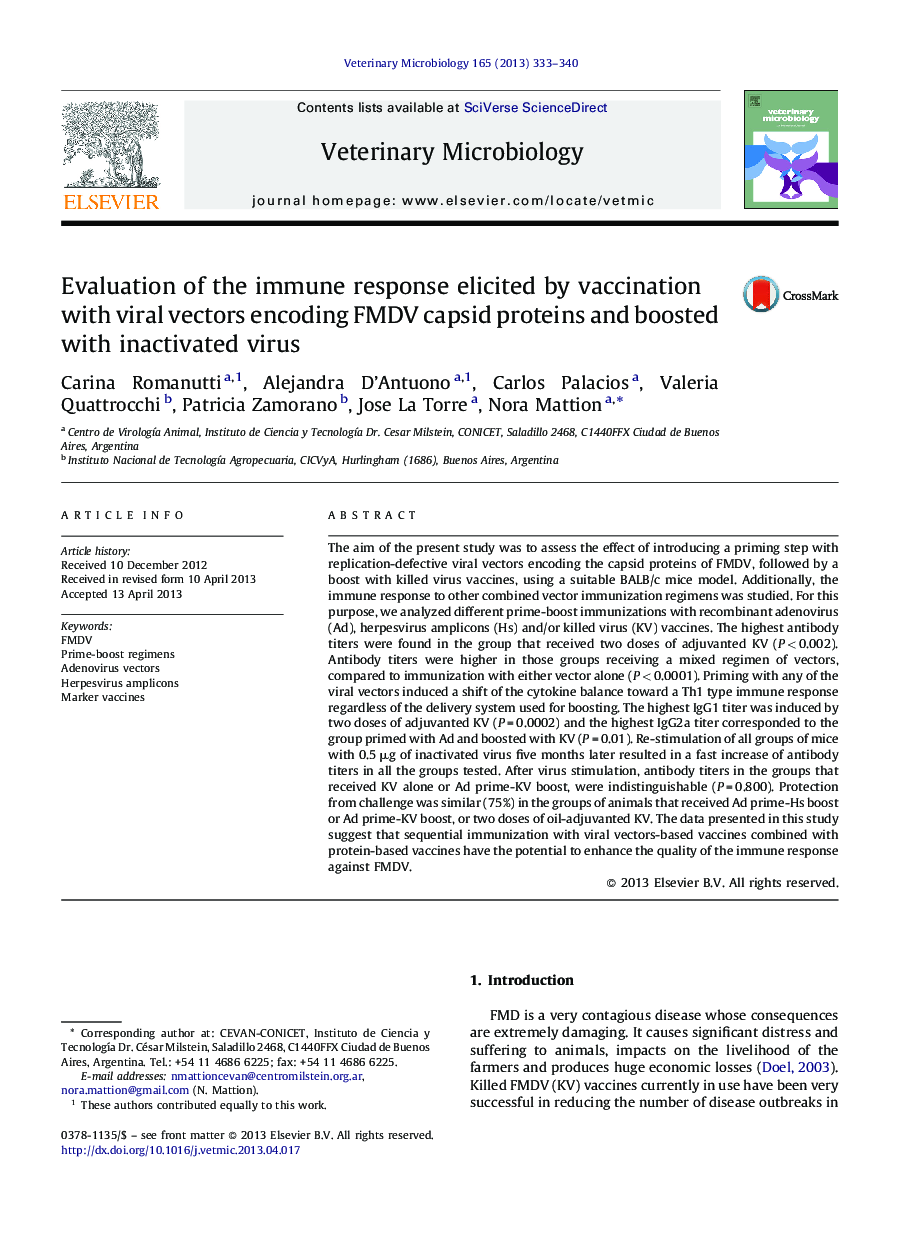| Article ID | Journal | Published Year | Pages | File Type |
|---|---|---|---|---|
| 2466833 | Veterinary Microbiology | 2013 | 8 Pages |
The aim of the present study was to assess the effect of introducing a priming step with replication-defective viral vectors encoding the capsid proteins of FMDV, followed by a boost with killed virus vaccines, using a suitable BALB/c mice model. Additionally, the immune response to other combined vector immunization regimens was studied. For this purpose, we analyzed different prime-boost immunizations with recombinant adenovirus (Ad), herpesvirus amplicons (Hs) and/or killed virus (KV) vaccines. The highest antibody titers were found in the group that received two doses of adjuvanted KV (P < 0.002). Antibody titers were higher in those groups receiving a mixed regimen of vectors, compared to immunization with either vector alone (P < 0.0001). Priming with any of the viral vectors induced a shift of the cytokine balance toward a Th1 type immune response regardless of the delivery system used for boosting. The highest IgG1 titer was induced by two doses of adjuvanted KV (P = 0.0002) and the highest IgG2a titer corresponded to the group primed with Ad and boosted with KV (P = 0.01). Re-stimulation of all groups of mice with 0.5 μg of inactivated virus five months later resulted in a fast increase of antibody titers in all the groups tested. After virus stimulation, antibody titers in the groups that received KV alone or Ad prime-KV boost, were indistinguishable (P = 0.800). Protection from challenge was similar (75%) in the groups of animals that received Ad prime-Hs boost or Ad prime-KV boost, or two doses of oil-adjuvanted KV. The data presented in this study suggest that sequential immunization with viral vectors-based vaccines combined with protein-based vaccines have the potential to enhance the quality of the immune response against FMDV.
